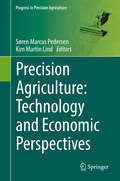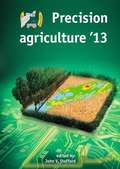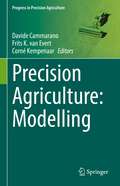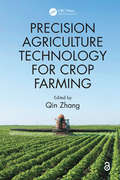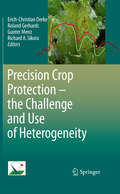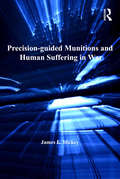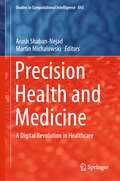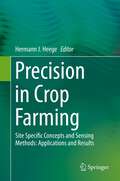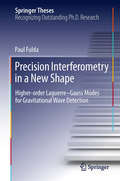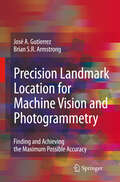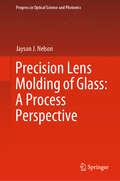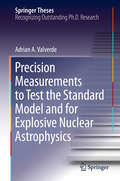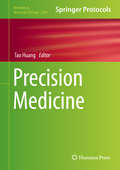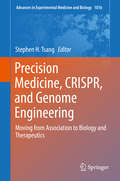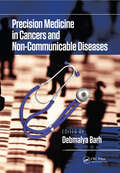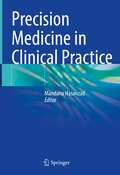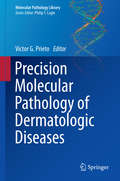- Table View
- List View
Precise and accurate results (large print)
by RnibThis page shows two images of a section of a thermometer scale that demonstrate the concepts of precise and accurate measurement results. There is a locator dot shown, which will be at the top left of the page when the image is the correct way up. The thermometer scales are shown from the side with the heavy dashed horizontal lines (red in the Large Print version) representing the results and the heavy plain line (green in the Large Print version) showing the true value. The image on the left shows precise measurements and the image on the right, the accurate measurements.
Precise and accurate results (UEB contracted)
by RnibThis page shows two images of a section of a thermometer scale that demonstrate the concepts of precise and accurate measurement results. There is a locator dot shown, which will be at the top left of the page when the image is the correct way up. The thermometer scales are shown from the side with the heavy dashed horizontal lines (red in the Large Print version) representing the results and the heavy plain line (green in the Large Print version) showing the true value. The image on the left shows precise measurements and the image on the right, the accurate measurements.
Precise and accurate results (UEB uncontracted)
by RnibThis page shows two images of a section of a thermometer scale that demonstrate the concepts of precise and accurate measurement results. There is a locator dot shown, which will be at the top left of the page when the image is the correct way up. The thermometer scales are shown from the side with the heavy dashed horizontal lines (red in the Large Print version) representing the results and the heavy plain line (green in the Large Print version) showing the true value. The image on the left shows precise measurements and the image on the right, the accurate measurements.
Precisely Predictable Dirac Observables (Fundamental Theories of Physics #154)
by Heinz Otto CordesThis work presents a Clean Quantum Theory of the Electron, based on Dirac’s equation. "Clean" in the sense of a complete mathematical explanation of the well known paradoxes of Dirac’s theory and a connection to classical theory. It discusses the existence of an accurate split between physical states belonging to the electron and to the positron as well as the fact that precisely predictable observables must preserve this split.
Precision Agriculture: Technology and Economic Perspectives (Progress in Precision Agriculture)
by Søren Marcus Pedersen Kim Martin LindThis book presents cases from different countries with a main focus on the perspectives of using precision farming in Europe. Divided into 12 chapters it addresses some of the most recent developments and aspects of precision farming. The intention of this book is to provide an overview of some of the most promising technologies with precision agriculture from an economic point of view. Each chapter has been put together so that it can be read individually should the reader wish to focus on one particular topic. Precision Farming as a farm technology benefits from large-scale advantages due to relatively high investment costs and is primarily adopted on farms with medium to large field areas.
Precision agriculture '13
by John V. StaffordPrecision agriculture is now 'main stream' in agriculture and is playing a key role as the industry comes to terms with the environment, market forces, quality requirements, traceability, vehicle guidance and crop management. Research continues to be necessary and needs to be reported and disseminated to a wide audience. This book contains peer reviewed papers presented at the 9th European Conference on Precision Agriculture, held in Lleida, Spain. The papers reflect the wide range of disciplines that impinge on precision agriculture: technology, crop science, soil science, agronomy, information technology, decision support, remote sensing and others. The broad range of research topics reported will be a valuable resource for researchers, advisors, teachers and professionals in agriculture long after the conference has finished.
Precision Agriculture: Modelling (Progress in Precision Agriculture)
by Davide Cammarano Frits K. van Evert Corné KempenaarThis book describes how models are used to monitor crops and soils in precision agriculture, and how they are used to support farmers’ decisions. The introductory section starts with an overview of precision agriculture from the early days of yield monitoring in the 1980s to the present, with a focus on the role of models. The section continues with descriptions of the different kinds of models and the opportunities for their application in precision agriculture. The section concludes with a chapter on socio-economic drivers and obstacles to the adoption of precision agriculture technologies. The middle section of the book explores the state-of-the-art in modeling for precision agriculture. Individual chapters focus on the major processes in precision agriculture: water use, nitrogen and other amendments, as well as weeds, pests and diseases. The final section contains a series of short chapters that each describe a commercial, model-based service that is currently available to farmers. The book aims to provide useful information to graduate-level professionals that want to broaden their knowledge of precision agriculture; to scientists who want to learn about using academic knowledge in practical farming; and to farmers, farm consultants and extension workers who want to increase their understanding of the science behind some of the commercial software available to the farming community.
Precision Agriculture Technology for Crop Farming
by Qin ZhangExplores the Sustainable Development of Agriculture in TechnologyPrecision agriculture technology, when properly integrated into the crop production process, can greatly improve overall production and sustainability. Precision Agriculture Technology for Crop Farming focuses on the technology of site-specific crop management; detailing applications
Precision Agriculture Technology for Crop Farming
by Qin ZhangThis book provides a review of precision agriculture technology development, followed by a presentation of the state-of-the-art and future requirements of precision agriculture technology. It presents different styles of precision agriculture technologies suitable for large scale mechanized farming; highly automated community-based mechanized production; and fully mechanized farming practices commonly seen in emerging economic regions. The book emphasizes the introduction of core technical features of sensing, data processing and interpretation technologies, crop modeling and production control theory, intelligent machinery and field robots for precision agriculture production.
Precision Crop Protection - the Challenge and Use of Heterogeneity: The Challenge And Use Of Heterogeneity
by Erich-Christian Oerke Roland Gerhards Gunter Menz Richard A. SikoraPrecision farming is an agricultural management system using global navigation satellite systems, geographic information systems, remote sensing, and data management systems for optimizing the use of nutrients, water, seed, pesticides and energy in heterogeneous field situations. This book provides extensive information on the state-of-the-art of research on precision crop protection and recent developments in site-specific application technologies for the management of weeds, arthropod pests, pathogens and nematodes. It gives the reader an up-to-date and in-depth review of both basic and applied research developments. The chapters discuss I) biology and epidemiology of pests, II) new sensor technologies, III) applications of multi-scale sensor systems, IV) sensor detection of pests in growing crops, V) spatial and non-spatial data management, VI) impact of pest heterogeneity and VII) precise mechanical and chemical pest control.
Precision Electroweak Physics at Electron-Positron Colliders (Springer Tracts in Modern Physics #220)
by Stefan RothThis book reviews recent contributions of electron positron colliders to the precision test of the electroweak Standard Model. It includes a short summary of the measurements at the Z resonance and gives an overview of the electroweak processes above the Z. Subsequently, measurements of the W mass at LEP are discussed in detail. Late chapters offer an outlook on electroweak physics at the future LHC. Also features many illustrations and tables.
Precision-guided Munitions and Human Suffering in War (Military and Defence Ethics)
by James E. HickeyJames Hickey proceeds from the premise that throughout history, humans have demonstrated a proclivity for using violence against one another as a means to achieve an end, means enabled, in many respects, by the technologies available at the time. Advancing technology has often been a prime enabler of ever-increasing levels of violence and attendant human suffering. At a few junctures in history, however, certain technologies have seemingly provided the armed forces that possess them the ability to fight wars with decreasing levels of violence and suffering. Today, precision-guided munitions (PGMs) with their high degree of discrimination and accuracy again hold such promise. This book seeks to answer the question: Do PGMs mitigate suffering in war, and have these weapons changed the way decisions regarding war and peace have been made? Answering this question helps us understand possible shifts in emphasis in modern warfare, both in terms of methods employed and of the greater concern placed on limiting human suffering during conflict. This book will help students of ethics, just war and military history and senior military and civilian leaders to understand the possible outcomes and wider implications of their strategic choices to use such technology.
Precision-guided Munitions and Human Suffering in War (Military and Defence Ethics)
by James E. HickeyJames Hickey proceeds from the premise that throughout history, humans have demonstrated a proclivity for using violence against one another as a means to achieve an end, means enabled, in many respects, by the technologies available at the time. Advancing technology has often been a prime enabler of ever-increasing levels of violence and attendant human suffering. At a few junctures in history, however, certain technologies have seemingly provided the armed forces that possess them the ability to fight wars with decreasing levels of violence and suffering. Today, precision-guided munitions (PGMs) with their high degree of discrimination and accuracy again hold such promise. This book seeks to answer the question: Do PGMs mitigate suffering in war, and have these weapons changed the way decisions regarding war and peace have been made? Answering this question helps us understand possible shifts in emphasis in modern warfare, both in terms of methods employed and of the greater concern placed on limiting human suffering during conflict. This book will help students of ethics, just war and military history and senior military and civilian leaders to understand the possible outcomes and wider implications of their strategic choices to use such technology.
Precision Health and Medicine: A Digital Revolution in Healthcare (Studies in Computational Intelligence #843)
by Arash Shaban-Nejad Martin MichalowskiThis book highlights the latest advances in the application of artificial intelligence to healthcare and medicine. It gathers selected papers presented at the 2019 Health Intelligence workshop, which was jointly held with the Association for the Advancement of Artificial Intelligence (AAAI) annual conference, and presents an overview of the central issues, challenges, and potential opportunities in the field, along with new research results. By addressing a wide range of practical applications, the book makes the emerging topics of digital health and precision medicine accessible to a broad readership. Further, it offers an essential source of information for scientists, researchers, students, industry professionals, national and international public health agencies, and NGOs interested in the theory and practice of digital and precision medicine and health, with an emphasis on risk factors in connection with disease prevention, diagnosis, and intervention.
Precision in Crop Farming: Site Specific Concepts and Sensing Methods: Applications and Results
by Hermann J. HeegeHigh yields and environmental control in crop farming call for precise adaptations to local growing conditions. Treating large fields in a uniform way by high capacity machinery cannot be regarded as a sustainable method for many situations. Because differences existing within single fields must be considered. The transition from former field work carried out manually or by small implements to present-day high-capacity machinery caused that the farmers lost the immediate and close contact with soils and crops. However, modern sensing and controlling technology can make up for this deficit. High tech methods that include proximal sensing and signals from satellites can provide for controls that allow adjusting farming operations to small fractions of one ha and sometimes even down to some m2, hence in a site-specific mode. This applies to operations for soil cultivation, sowing, fertilizing and plant protection. This book deals with site-specific concepts, applications and results.
Precision Interferometry in a New Shape: Higher-order Laguerre-Gauss Modes for Gravitational Wave Detection (Springer Theses)
by Paul FuldaWith his Ph.D. thesis, presented here in the format of a "Springer Theses", Paul Fulda won the 2012 GWIC thesis prize awarded by the Gravitational Wave International Committee. The impact of thermal noise on future gravitational wave detectors depends on the size and shape of the interrogating laser beam. It had been known since 2006 that, in theory, higher-order Laguerre-Gauss modes could reduce thermal noise. Paul Fulda’s research brings Laguerre-Gauss modes an enormous step forward. His work includes analytical, numerical and experimental work on table-top setups as well as experiments at the Glasgow 10m prototype interferometer. Using numerical simulations the LG33 mode was selected as the optical mode to be tested. Further research by Paul and his colleagues since then concentrated on this mode. Paul has developed and demonstrated simple and effective methods to create this mode with diffractive optics and successfully demonstrated its compatibility with the essential building blocks of gravitational wave detectors, namely, optical cavities, Michelson interferometers and opto-electronic sensing and control systems. Through this work, Laguerre-Gauss modes for interferometers have been transformed from an essentially unknown entity to a well understood option with an experimental basis.
Precision Landmark Location for Machine Vision and Photogrammetry: Finding and Achieving the Maximum Possible Accuracy
by José A. Gutierrez Brian S.R. ArmstrongThis book addresses the problem of measurement error associated with determining the location of landmarks in images. The least possible photogrammetric uncertainty in a given situation is determined using the Cramér–Rao Lower Bound (CRLB). The monograph provides the reader with: the most complete treatment to date of precision landmark location and the engineering aspects of image capture and processing; detailed theoretical treatment of the CRLB, and more.
Precision Lens Molding of Glass: A Process Perspective (Progress in Optical Science and Photonics #8)
by Jayson J. NelsonThis book highlights the tools and processes used to produce high-quality glass molded optics using commercially available equipment. Combining scientific data with easy-to-understand explanations of specific molding issues and general industry information based on firsthand studies and experimentation, it provides useful formulas for readers involved in developing develop in-house molding capabilities, or those who supply molded glass optics. Many of the techniques described are based on insights gained from industry and research over the past 50 years, and can easily be applied by anyone familiar with glass molding or optics manufacturing. There is an abundance of information from around the globe, but knowledge comes from the application of information, and there is no knowledge without experience. This book provides readers with information, to allow them to gain knowledge and achieve success in their glass molding endeavors.
Precision Measurements to Test the Standard Model and for Explosive Nuclear Astrophysics (Springer Theses)
by Adrian A. ValverdeThis thesis presents two significant results in the field of precision measurements in low-energy nuclear physics. Firstly, it presents a precise half-life determination of 11C, leading to the most precise ft-value for a beta decay transition between mirror nuclides, an important advance in the testing of the electroweak sector of the Standard Model. Secondly, it describes a high-precision mass measurement of 56Cu, a critical nucleus for determining the path of the astrophysical rapid-proton capture process, performed by the author using the LEBIT Penning trap at the National Superconducting Cyclotron Laboratory. This new measurement resolves discrepancies in previously-reported calculated mass excesses. In addition, the thesis also presents the construction and testing of a radio-frequency quadrupole cooler and buncher that will be part of the future N = 126 factory at Argonne National Laboratory aimed at producing nuclei of interest for the astrophysical rapid-neutron capture process for the first time.
Precision Medicine (Methods in Molecular Biology #2204)
by Tao HuangThis book serves to introduce the technologies and applications of precision medicine. Beginning with a section on emerging experimental and bioinformatics technologies, the collection continues with chapters covering cancer studies, cardiovascular diseases, COPD and systemic lupus erythematosus, as well as the latest engineering and surgical developments in precision medicine. As a volume in the highly successful Methods in Molecular Biology series, this book presents key information from experts in the field. Authoritative and cutting-edge, Precision Medicine covers perspectives of precision medicine from basic research to clinical surgeries, from cancer to cardiovascular disease, from sequencing technology to big data analysis in the hope of broadening the horizons for researchers, engineers, and clinicians and accelerating the interdisciplinary precision medicine research and applications.
Precision Medicine, CRISPR, and Genome Engineering: Moving from Association to Biology and Therapeutics (Advances in Experimental Medicine and Biology #1016)
by Stephen H. Tsang George M. ChurchThis book presents descriptive overviews of gene editing strategies across multiple species while also offering in-depth insight on complex cases of application in the field of tissue engineering and regenerative medicine. Chapters feature contributions from leaders in stem cell therapy and biology, providing a comprehensive view of the application of gene therapy in numerous fields with an emphasis on ophthalmology, stem cells, and agriculture. The book also highlights recent major technological advances, including ZFN, TALEN, and CRISPR. Precision Medicine, CRISPR, and Genome Engineering is part of the highly successful Advances in Experimental Medicine and Biology series. It is an indispensable resource for researchers and students in genetics as well as clinicians.
Precision Medicine in Cancers and Non-Communicable Diseases: Prediction, Prevention with Personalization
by Debmalya BarhThe availability of human genome, large amount of data on individual genetic variations, environmental interactions, influence of lifestyle, and cutting-edge tools and technologies for big-data analysis have led to the era of clinical practice of "Precision Medicine". This book aims to provide a readily available resource on all the important developments achieved so far in the field of oncology. All recent developments have been explained along with epidemiology, technologies and approaches to manage the included diseases. Therefore, readers will get the up to date information on the next-generation approach in tackling all kinds of cancer. Key Features • Presents the latest trend of cancer management based on precision/predictive medicine approach • Reviews the latest and up to date literature in the field of Precision Medicine • Highlights the next generation approach in tackling malignant diseases • Discusses how a life-threatening disease like cancer can be managed with the help of Precision Medicine • Encapsulates a global prospective
Precision Medicine in Cancers and Non-Communicable Diseases: Prediction, Prevention with Personalization
by Debmalya BarhThe availability of human genome, large amount of data on individual genetic variations, environmental interactions, influence of lifestyle, and cutting-edge tools and technologies for big-data analysis have led to the era of clinical practice of "Precision Medicine". This book aims to provide a readily available resource on all the important developments achieved so far in the field of oncology. All recent developments have been explained along with epidemiology, technologies and approaches to manage the included diseases. Therefore, readers will get the up to date information on the next-generation approach in tackling all kinds of cancer. Key Features • Presents the latest trend of cancer management based on precision/predictive medicine approach • Reviews the latest and up to date literature in the field of Precision Medicine • Highlights the next generation approach in tackling malignant diseases • Discusses how a life-threatening disease like cancer can be managed with the help of Precision Medicine • Encapsulates a global prospective
Precision Medicine in Clinical Practice
by Mandana HasanzadThe book provides complete information on the cornerstones of precision medicine through the omics approach. Clinical applications of genomics and precision medicine have progressed from a theoretical wish list to an impactful force in medical practice.Step-by-step descriptions are provided from basics to the future application and its benefit in clinical practice. Precision medicine aims to personalize health care by tailoring decisions and treatments to each individual in every possible way. Precision medicine includes pharmacogenomics. Essential information is provided on the role of precision medicine and pharmacogenomics in the clinical practice of cancer, cardiovascular disease, diabetes, psychiatric disease, and also the importance for healthcare professionals. This book will assist the practitioners how to integrate precision medicine and pharmacogenomics data into their clinical practice. It is hoped that physicians, pharmacists, and scientists with basic scientific knowledge of precision medicine will findthis book useful.
Precision Molecular Pathology of Dermatologic Diseases (Molecular Pathology Library #9)
by Victor G. PrietoThis volume is a concise yet comprehensive resource for physicians dealing with, and interested in, the field of molecular pathology in dermatopathology. The book includes descriptions of the techniques and their application to cutaneous diseases and describes possible future techniques and their use in dermatopathology. Special emphasis is also given to the practical application of these techniques to particular situations illustrated by demonstrative cases.Written by experts in their fields, Precision Molecular Pathology of Dermatologic Diseases is of great value to pathologists, dermatologists, resident and fellows, internists, and general practitioners who deal with dermatologic diseases.


